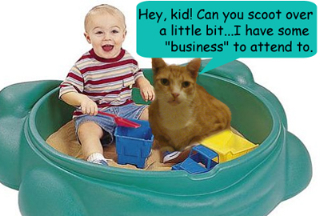Two years ago, Christopher Beth, director of the Redwood City Parks, Recreation and Community Services department, received an anonymous tip about a couple of children getting sick after playing in the sandbox at Stafford Park. He decided to order tests.
“We’d never tested the sand before,” Beth said. “Other cities say they don’t test either. There’s no requirement.”
The results showed high levels of E. coli bacteria. Since then, a similar problem was  discovered at Maddux Park. The sand play areas at both parks are being replaced with water features, officials said, and the renovations should be done by mid-January.
discovered at Maddux Park. The sand play areas at both parks are being replaced with water features, officials said, and the renovations should be done by mid-January.
The sand features at all the other Redwood City parks were tested, and just Maddux came up with an E. coli problem. The source of contamination was feline feces in one case and human feces in the other.


.jpg) Managing director Joan Greenway said,
Managing director Joan Greenway said,  If a child puts her fingers in her mouth, she can be infecting herself with the eggs of a parasite. In some cases, the hookworms will penetrate the skin, causing a condition called cutaneous larva migrans. In 2006,
If a child puts her fingers in her mouth, she can be infecting herself with the eggs of a parasite. In some cases, the hookworms will penetrate the skin, causing a condition called cutaneous larva migrans. In 2006,